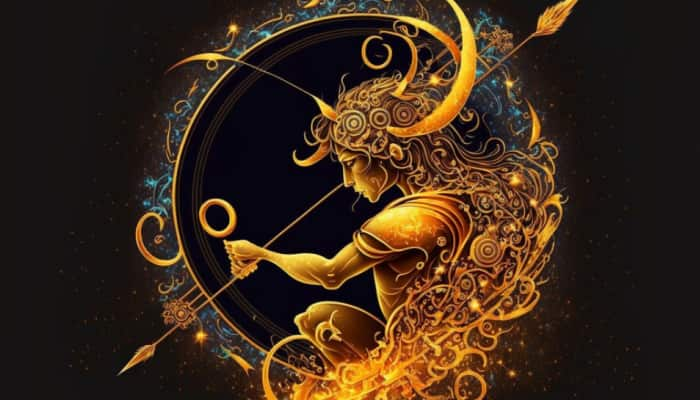Sino-India security mania
Was showing military might to Pakistan the sole objective behind India`s nuclear tests? The answer is `no`. A number of diplomats, at various times, have stated that India`s key concern was always China. How could India forget its border war with Beijing in 1962?
Trending Photos
 Kamna Arora
May 18, 1974 – India stuns the world by carrying out its first nuclear weapons test.
May 11, 1998 – The international community is shaken again as India conducts three underground nuclear tests.
May 13, 1998 – Barely two days later, India conducts two more nuclear tests.
India`s decision to conduct as many as five nuclear tests in the May of 1998 were condemned globally, with Pakistan promising the beginning of an arms race in South Asia by retaliating on May 28, 1998 with its own atomic tests.
Was showing military might to Pakistan the sole objective behind India`s nuclear tests? The answer is `no`. A number of diplomats, at various times, have stated that India`s key concern was always China. How could India forget its border war with Beijing in 1962?
The nuclear test conducted by India in 1974 was in response to China`s tests in 1964. In actual, the 1998 tests were intended at suggesting to `China` and the `US` that their grouping raises safety concerns for India. On June 20, 1998, Thomas L Friedman published his report in the `New York Times`, analysing that the tests "were the only way for India to get what it wants most from the US and China: R-E-S-P-E-C-T".
India had no option but to balance the power axis in South Asia dominated by China. The world`s most populous country was on its way to becoming No 2 power in the world after the US. India had to counter China that was rising as an economic and military powerhouse. The nuclear tests in 1998 helped India in marking its presence on the N-map.
India and China have around 40 percent of the world`s population. Any kind of rivalry between the two could send ripples across the world.
A lot has changed since the 1998 nuclear tests. From the termination of the operation of mutually-targeted nuclear-armed missiles by both the sides to surging trade between the two, ties have considerably taken a positive direction. However, the subconscious fear of each other still haunts Asia`s two great powers.
The governments of India and China have, from time-to-time, vowed their faithfulness to each other. However, both are wary of each other’s strategic influences in the region.
China assisted Pakistan in laying down the foundation of the Deep Sea Port project in 2002. The port area is in a fishing village of Gwadar in Pakistan`s western province of Baluchistan bordering Afghanistan to the northwest and Iran to the southwest. After its completion, the Gwadar port will be categorised in the list of the world`s largest deep-sea ports.
The Gwadar project will not only help China fend off robust US military presence in the Persian Gulf but also give them a seat to scrutinise the movement of global oil supplies from the Persian Gulf.
The project has serious strategic implications for India. Admiral Sureesh Mehta, Chief of the Naval Staff, has also expressed serious concerns over the matter. In January 2008, Mehta had noted, “Being only 180 nautical miles from the exit of the Straits of Hormuz, Gwadar, being built in Baluchistan coast, would enable Pakistan take control over the world energy jugular and interdiction of Indian tankers.” He further admitted that the actual challenge for India was to balance ties with China in a way that competition for strategic importance of space in the Indian Ocean leads to cooperation rather than conflict.
Coming to India`s eastern side will bring to light the alliance between China and Myanmar. Notably, the China-Myanmar nexus is strategically valuable for Beijing to restrain India’s influence in Southeast Asia. That is why India competes hard with China to have more and more influence on Myanmar at times. Construction of deep water port on the Bay of Bengal by China with Myanmar’s assistance is another alarming development for India.
China has made rail and road links along and inside Myanmar, Pakistan, Vietnam and Nepal. Proposals to extend the Golmud-Lhasa rail line, the world`s highest railway, to Nepal have also been made. Albeit China maintains that the rail link will only help in extending its trade and tourism ties with Nepal, the announcement has raised eyebrows of some strategic thinkers in India.
The Chinese government recently announced USD 3 billion worth of investments in various industrial projects in Tibet. The implications of Beijing-Lhasa rail link are well-understood in India. The investment made by China in the name of trade will assist Beijing in widening its military capabilities. Defence analysts across the world have evaluated Tibet as a `safe border` for China. And the militarisation of the Tibet plateau by Beijing poses a key strategic threat to India.
It makes one thing apparent and that is, China is aiming at containing India by befriending the neighbouring countries, thereby encircling it.
There is no doubt that efforts at Chinese military`s modernisation have surged since the mid-to-late 1990s. Albeit China has vowed to make its military budget transparent, yet the action is too far to believe. A 2006 Pentagon report on China`s military suggested that the Asian country keeps on investing large amounts "in high-end, asymmetric military capabilities, emphasising electronic and cyber-warfare; counter-space operations; ballistic and cruise missiles; advanced integrated air defence systems; next generation torpedoes; advanced submarines; strategic nuclear strike from modern, sophisticated land and sea-based systems."
It is clear that China`s emergence as military power is threatening the US as well. The international community is wary of a China more powerful than they can handle.
But isn’t China threatened at all? China’s security worries gained weight when India and the US inked a historic nuclear agreement. According to China`s top newspaper, the Indo-US nuclear deal is a "major blow" to non-proliferation. No matter what but besides all the evident gains from the deal, the agreement will serve the strategic agenda of the US. India can now help America to counter the China threat.
Commenting on the nuke deal, China`s top newspaper `People`s Daily` dubbed the agreement as a "major blow" to non-proliferation. According to a researcher from the Chinese Academy of Social Sciences, "Whether it is motivated by geo-political considerations or commercial interests, the US-India nuclear agreement has constituted a major blow to the international non-proliferation regime." And to offset the waves of Indo-US nuclear deal, Pakistan is reportedly seeking to attain nuclear fuel technology from China. On a way towards this aim, Pakistan has signed an agreement with China to build two nuclear reactors.
Security experts see this agreement as nothing but “a way to counter-balance growing US ties with India”.
Indian defence analyst K Subrahmanyam rightly notes that a rising power like China needs to be counter-balanced. He adds that India is successfully on its way to balance it from the west and south, Russia from the north, and Japan and Korea from the east. It is imperative for India to defend its borders and protect its territorial claims. China`s threat cannot stop India from shaping its security environment in a manner that permits its continued economic growth and development.
Kamna Arora
May 18, 1974 – India stuns the world by carrying out its first nuclear weapons test.
May 11, 1998 – The international community is shaken again as India conducts three underground nuclear tests.
May 13, 1998 – Barely two days later, India conducts two more nuclear tests.
India`s decision to conduct as many as five nuclear tests in the May of 1998 were condemned globally, with Pakistan promising the beginning of an arms race in South Asia by retaliating on May 28, 1998 with its own atomic tests.
Was showing military might to Pakistan the sole objective behind India`s nuclear tests? The answer is `no`. A number of diplomats, at various times, have stated that India`s key concern was always China. How could India forget its border war with Beijing in 1962?
The nuclear test conducted by India in 1974 was in response to China`s tests in 1964. In actual, the 1998 tests were intended at suggesting to `China` and the `US` that their grouping raises safety concerns for India. On June 20, 1998, Thomas L Friedman published his report in the `New York Times`, analysing that the tests "were the only way for India to get what it wants most from the US and China: R-E-S-P-E-C-T".
India had no option but to balance the power axis in South Asia dominated by China. The world`s most populous country was on its way to becoming No 2 power in the world after the US. India had to counter China that was rising as an economic and military powerhouse. The nuclear tests in 1998 helped India in marking its presence on the N-map.
India and China have around 40 percent of the world`s population. Any kind of rivalry between the two could send ripples across the world.
A lot has changed since the 1998 nuclear tests. From the termination of the operation of mutually-targeted nuclear-armed missiles by both the sides to surging trade between the two, ties have considerably taken a positive direction. However, the subconscious fear of each other still haunts Asia`s two great powers.
The governments of India and China have, from time-to-time, vowed their faithfulness to each other. However, both are wary of each other’s strategic influences in the region.
China assisted Pakistan in laying down the foundation of the Deep Sea Port project in 2002. The port area is in a fishing village of Gwadar in Pakistan`s western province of Baluchistan bordering Afghanistan to the northwest and Iran to the southwest. After its completion, the Gwadar port will be categorised in the list of the world`s largest deep-sea ports.
The Gwadar project will not only help China fend off robust US military presence in the Persian Gulf but also give them a seat to scrutinise the movement of global oil supplies from the Persian Gulf.
The project has serious strategic implications for India. Admiral Sureesh Mehta, Chief of the Naval Staff, has also expressed serious concerns over the matter. In January 2008, Mehta had noted, “Being only 180 nautical miles from the exit of the Straits of Hormuz, Gwadar, being built in Baluchistan coast, would enable Pakistan take control over the world energy jugular and interdiction of Indian tankers.” He further admitted that the actual challenge for India was to balance ties with China in a way that competition for strategic importance of space in the Indian Ocean leads to cooperation rather than conflict.
Coming to India`s eastern side will bring to light the alliance between China and Myanmar. Notably, the China-Myanmar nexus is strategically valuable for Beijing to restrain India’s influence in Southeast Asia. That is why India competes hard with China to have more and more influence on Myanmar at times. Construction of deep water port on the Bay of Bengal by China with Myanmar’s assistance is another alarming development for India.
China has made rail and road links along and inside Myanmar, Pakistan, Vietnam and Nepal. Proposals to extend the Golmud-Lhasa rail line, the world`s highest railway, to Nepal have also been made. Albeit China maintains that the rail link will only help in extending its trade and tourism ties with Nepal, the announcement has raised eyebrows of some strategic thinkers in India.
The Chinese government recently announced USD 3 billion worth of investments in various industrial projects in Tibet. The implications of Beijing-Lhasa rail link are well-understood in India. The investment made by China in the name of trade will assist Beijing in widening its military capabilities. Defence analysts across the world have evaluated Tibet as a `safe border` for China. And the militarisation of the Tibet plateau by Beijing poses a key strategic threat to India.
It makes one thing apparent and that is, China is aiming at containing India by befriending the neighbouring countries, thereby encircling it.
There is no doubt that efforts at Chinese military`s modernisation have surged since the mid-to-late 1990s. Albeit China has vowed to make its military budget transparent, yet the action is too far to believe. A 2006 Pentagon report on China`s military suggested that the Asian country keeps on investing large amounts "in high-end, asymmetric military capabilities, emphasising electronic and cyber-warfare; counter-space operations; ballistic and cruise missiles; advanced integrated air defence systems; next generation torpedoes; advanced submarines; strategic nuclear strike from modern, sophisticated land and sea-based systems."
It is clear that China`s emergence as military power is threatening the US as well. The international community is wary of a China more powerful than they can handle.
But isn’t China threatened at all? China’s security worries gained weight when India and the US inked a historic nuclear agreement. According to China`s top newspaper, the Indo-US nuclear deal is a "major blow" to non-proliferation. No matter what but besides all the evident gains from the deal, the agreement will serve the strategic agenda of the US. India can now help America to counter the China threat.
Commenting on the nuke deal, China`s top newspaper `People`s Daily` dubbed the agreement as a "major blow" to non-proliferation. According to a researcher from the Chinese Academy of Social Sciences, "Whether it is motivated by geo-political considerations or commercial interests, the US-India nuclear agreement has constituted a major blow to the international non-proliferation regime." And to offset the waves of Indo-US nuclear deal, Pakistan is reportedly seeking to attain nuclear fuel technology from China. On a way towards this aim, Pakistan has signed an agreement with China to build two nuclear reactors.
Security experts see this agreement as nothing but “a way to counter-balance growing US ties with India”.
Indian defence analyst K Subrahmanyam rightly notes that a rising power like China needs to be counter-balanced. He adds that India is successfully on its way to balance it from the west and south, Russia from the north, and Japan and Korea from the east. It is imperative for India to defend its borders and protect its territorial claims. China`s threat cannot stop India from shaping its security environment in a manner that permits its continued economic growth and development.







)
)
)
)
)
)
)
)
)
)
